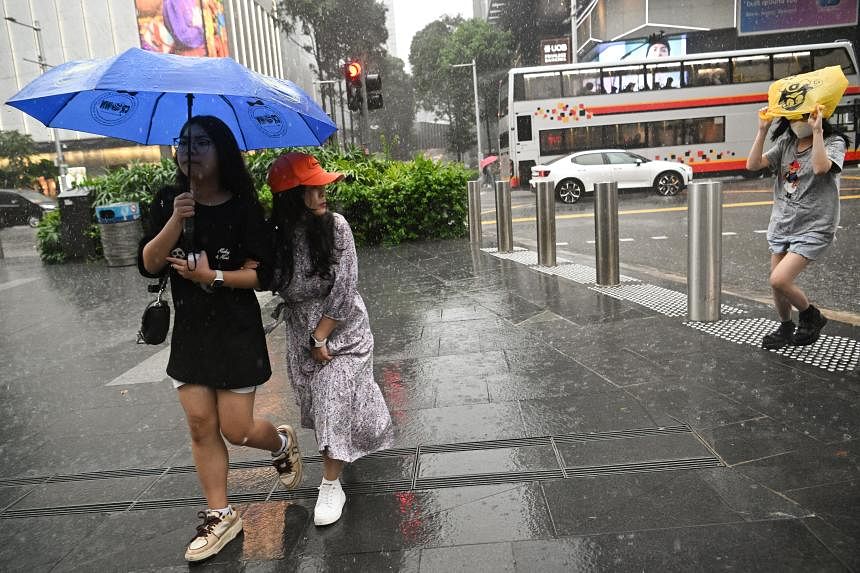SINGAPORE – While wetter weather is expected in the second half of 2024 with the return of La Nina, it is unlikely to offer much respite from the heat, said the weatherman.
This is because the weather phenomenon – “little girl” in Spanish – is not expected to overlap with the lingering effects of her brother El Nino, which has contributed to record-breaking temperatures globally in 2023 and 2024.
El Nino typically brings drier, hotter conditions to South-east Asia and Australia, while La Nina usually brings wetter and cooler conditions. They alternate every few years and, together, the two phases are known as the El Nino-Southern Oscillation (Enso).
The peak temperature impact from El Nino was during its decaying phase between March and April 2024, said the Meteorological Service Singapore (MSS).
Currently, the Enso status is neutral, according to the MSS website, which means neither phenomenon is happening. This status is expected to remain until July.
The MSS forecasts a 60 to 70 per cent chance of La Nina conditions developing in the second half of 2024.
Over the last few months, cooler sub-surface ocean temperatures have been observed in the eastern tropical Pacific Ocean, and this is a precursor to La Nina, added MSS.
On June 3, the UN World Meteorological Organisation said there was a 60 per cent chance of La Nina conditions from July to September and a 70 per cent likelihood of it from August to November.
Depending on the strength of the upcoming La Nina and when it will peak, 2024’s annual average temperature could be either above or below the high of 28.2 deg C for 2023, the MSS said on June 7 in response to queries from The Straits Times.
“Additionally, there is the long-term warming trend that needs to be considered,” added the MSS, referring to global warming.
Each month of the El Nino period between June 2023 and April 2024 broke global temperature records, said the European Union’s Copernicus Climate Change Service.
La Nina typically brings more rainfall in Singapore, particularly during the South-west monsoon season between June and September, which is commonly the drier period here.
“Currently, there is no clear indication of the timing and strength of the predicted La Nina event. We can expect some indication about one month ahead of the onset of La Nina, and this will also depend on the skill of prediction models,” said MSS.

